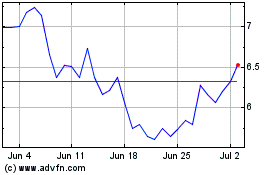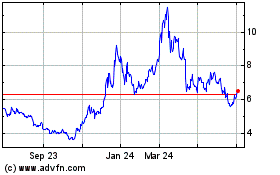Polkadot Treasury Faces Impending Funding Crisis: Limited To 24 Months Before Exhaustion
July 01 2024 - 9:30PM
NEWSBTC
The recent report released by the Polkadot Treasury for the first
half of 2024 has raised concerns over an impending funding crisis.
The report indicates that the Treasury’s assets, spread across
multiple chains, have become increasingly complex and challenging
to manage effectively. Decentralized finance (DeFi)
researcher DeFi Ignas has analyzed the report, highlighting the
Treasury’s limited runway of approximately two years at the current
burn rate of $87 million every six months. Funding Concerns Mount
For Polkadot Polkadot’s expenditure during the first half of
2024 paints a worrying picture. An extensive outreach program
accounted for $37 million, aiming to attract new users, developers,
and businesses. Additional expenses included $10 million on
ads/sponsorships, $4.4 million on influencers, and $4 million on
digital ads. Surprisingly, despite such expenditures, Polkadot’s
visibility on social media platforms, including “Platform X,”
remained notably low. Related Reading: Bitcoin Weekend
Trading Takes A Siesta: Volumes Plunge To Record Lows The Treasury
spent a total of $86 million in the past six months, managing $245
million (38 million DOT) in assets, with $188 million (29 million
DOT) in liquid form. The burn rate indicates that the Treasury may
face bankruptcy in less than two years. Polkadot’s token supply
experiences a 10% annual growth, primarily fueling staking rewards.
With a $10 billion market cap, stakers receive $1 billion per year,
which significantly affects network security costs. However,
a proposal to reduce inflation was rejected by 57% of the
stakeholders, further compounding the Treasury’s financial
challenges. New Governance Model The report reveals that direct fee
revenue remains marginal for Polkadot. In 2023-H2, Polkadot
generated 300,000 DOT through fees during a short-lived inscription
campaign. Under regular conditions, fee revenue stabilizes at
around 20,000 DOT per quarter. On the expense side, the
report highlights a 2.4x increase in DOT spending compared to
2023-H2. Ambitious proposals and larger ask sizes contributed to
this significant spending surge. Although the average DOT
price rose, resulting in more value per DOT, concerns about the
Treasury’s usage are mounting within the ecosystem. Related
Reading: Dogecoin Could Eclipse $1 Mark This Bull Run, Predicts
Analyst To address these challenges, Polkadot is moving towards a
more structured approach. Executive bodies, such as bounties and
collectives, are emerging to assume departmental roles within the
ecosystem. These bodies are responsible for security, data
research, core functionality development, network operation,
marketing, and business development activities. The key question
now is how to establish effective structures quickly to guide
Polkadot toward success. The solution, according to the
blockchain’s treasury, is to delegate more responsibility to these
executive bodies. These bodies are made up of competent individuals
who evaluate new proposals and deliver value. Collectives, similar
to subDAOs, have OpenGov capabilities and sub-treasuries to
facilitate their work. By leveraging these executive bodies,
Polkadot can outsource operational issues and mundane tasks,
allowing OpenGov stakeholders to focus on making critical
decisions. The effectiveness and performance of the executive
bodies are evaluated, and budget allocations are negotiated with
OpenGov based on the results. At the time of writing, DOT is
trading at $6.35, representing a price recovery of nearly 4% in the
24-hour time frame. However, the 17th largest cryptocurrency by
market cap is still down 10% over the past month. Featured
image from DALL-E, chart from TradingView.com
Polkadot (COIN:DOTUSD)
Historical Stock Chart
From Jun 2024 to Jul 2024

Polkadot (COIN:DOTUSD)
Historical Stock Chart
From Jul 2023 to Jul 2024
